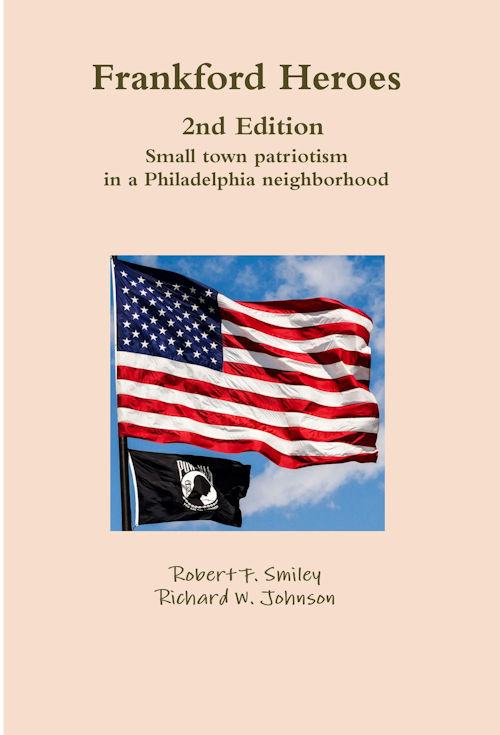[fg_youtube]http://youtu.be/wcu7AQYsDco[/fg_youtube]
Category: history
5003 Penn Street Update
We rarely have this much interest in a run down house as we have had in 5003 Penn St. Our previous posts here. The latest news developed over the weekend when Laura and Nikki Kaftan emailed with some information. They were doing genealogy and googled an address from an obituary and found our post. They forwarded a picture to me of the house as it originally looked.
The obituary was for John Findeisen who was manager of American Fork and Hoe Company which was located at Ashland Street and the Frankford Creek. He died in 1913. 
Below is a slide show of the original house and some current shots of what it looks like today. There have been major changes. Not many of those old porches survive 100 years. There were major changes to the upper floor in the front and on the side.
However, it looks like the original shutters were still somewhere inside. You can see them in one of the pictures.
I have to admire Frank J Rocchino for taking on this project. Thanks to Debbie Klak of the Historical Society of Frankford for her input.
Historical Society of Frankford March Meeting
Open House at the G.A.R. Museum THIS Sunday
Sunday, March 3, 2013 at 1:30pm
History of Palmer Cemetery and the Historic Burial Grounds of Fishtown and Kensington
Historian – Kenneth Milano
FREE & Open to the public!
GRAND ARMY OF THE REPUBLIC MUSEUM & LIBRARY
Historic Ruan House • 4278 Griscom Street
(215) 289-6484
African American Burial Ground at Benjamin Rush State Park
African American Burial Ground in Northeast Philadelphia
February 18, 2013
Digital Report by Joseph J. Menkevich
Introduction
As a member of the research committee of the Historical Society of Frankford and as an independent researcher, I felt a moral obligation to personally contact a number of the area’s AME & Baptist Churches and inform them of this Historical Cemetery. Many members of the Black Community thanked me, as most had never heard about it before.
On the outskirts of Benjamin Rush State Park there is a small plot of ground that once belonged to the Byberry Preparative Meeting (Society of Friends).
In 1780, the Byberry Meeting established a cemetery for Free-Blacks & former Slaves. After 200 years of custodianship, & for reasons still unknown, the Byberry Friends sold the African American Cemetery to the City of Philadelphia.
Today – as Benjamin Rush State Park undergoes it’s final stages of development, the “[African Amerian] Historic Burial Ground Not To Be Disturbed” appears to be safely inside the Plan of the Park, however that may not be the case. It is presently unknown if the City still retains ownership or not.
Presently (no matter who “owns” it), there is no clarity on the fate of this cemetery and thus-far, there has not yet been any State or City Official speak on it’s inclusion to the Philadelphia Register of Historic Places or for a ceremony & installation an Historical Marker.
On Thursday, January 27, 2013 – I met with State Park Manager Eric Ihlein at Benjamin Rush State Park and did we did a walk around the general area of African American Cemetery site.
Eric Ihlein explained many of the construction plans. What I understood from the conversation is that the Park has funding & a budget, but the African Cemetery is not included in that budget. The plan for now seems to be an ongoing study by several “historical groups.” Here are my findings:
Continue reading African American Burial Ground at Benjamin Rush State Park





